Key takeaways
- Russia’s reforms exhibit a complex balance between modernization efforts and the retention of traditional power structures, leading to mixed public perceptions of progress.
- Constitutional amendments in 2020 signal a consolidation of power that raises concerns about political pluralism and public trust in institutions.
- Evolving economic governance aims to enhance investment and innovation, but inconsistent implementation and bureaucratic hurdles hinder potential growth.
- Social implications highlight widening disparities, as benefits of reforms mainly favor urban populations, leaving rural communities feeling excluded.
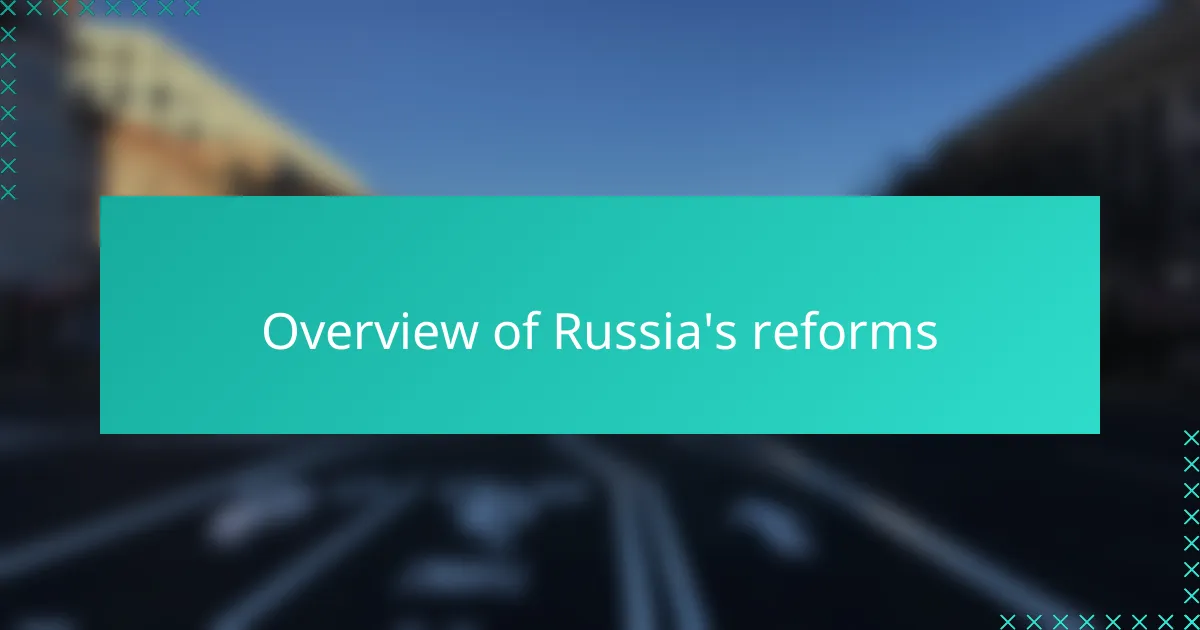
Overview of Russia’s reforms
Russia’s reforms have always struck me as a complex interplay between ambition and constraint. Over the past decades, efforts to modernize the economy and streamline governance have been evident, yet the pace and scope of change often seem uneven. Have you ever wondered why some reforms take hold swiftly while others struggle to gain traction?
From my observation, key reforms in areas like fiscal policy, digital infrastructure, and legal frameworks are designed to integrate Russia more deeply into the global system. Still, these transformations come with the challenge of balancing traditional power structures and emerging market demands. It’s like watching a delicate dance between holding on and letting go.
What fascinates me most is how these reforms reflect not just political strategy but also a response to social realities and public expectations. I recall conversations with colleagues in Russia who see reform as both necessity and risk; their mixed emotions provide a window into the country’s ongoing journey toward change.
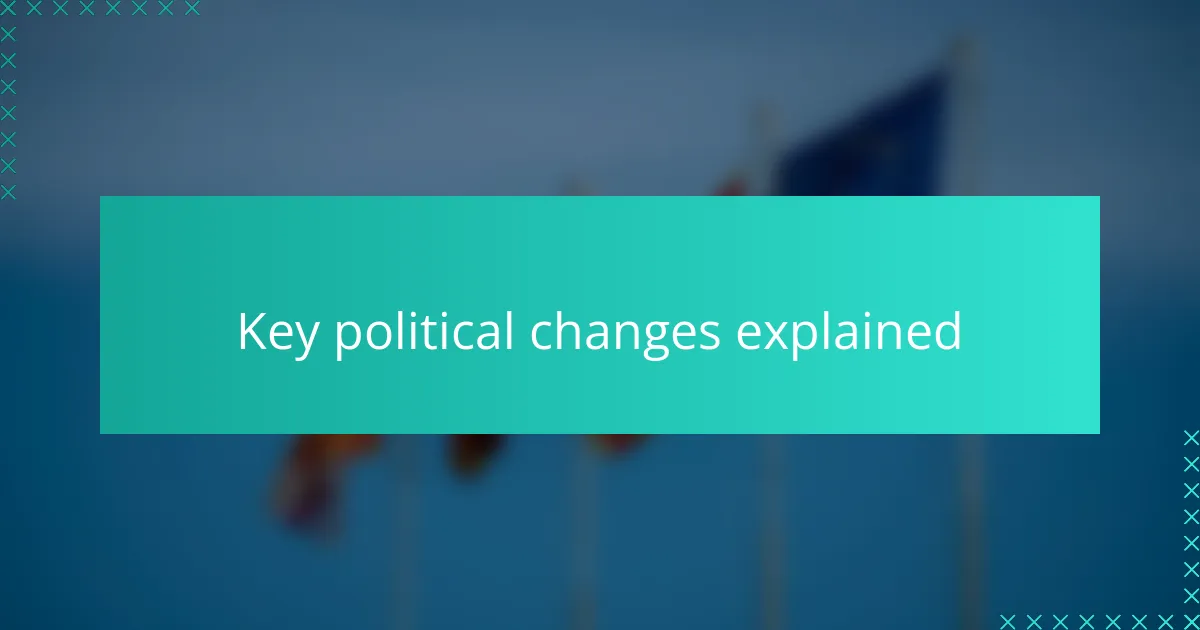
Key political changes explained
When I look closely at the key political changes, one thing stands out: the constitutional amendments in 2020 reshaped power dynamics significantly. It wasn’t just a legal update; it effectively reset presidential term limits, which, from my perspective, signals an intention to solidify long-term control rather than promote political pluralism. Have you ever wondered what message such a move sends domestically and internationally? To me, it’s a clear statement about continuity over change.
Another critical shift I noticed is the tightening of state control over the political landscape, especially regarding opposition voices and media freedoms. Speaking candidly, it feels like an attempt to manage dissent and shape a narrative that supports the reform agenda. This makes me ask—how does this balance between control and reform impact the public’s trust in political institutions? Based on conversations I’ve had, many Russians are skeptical but also seem resigned to this reality.
Then, there’s the economic governance reforms that aim to boost investment and innovation through improved regulation and digitalization. From my experience, these changes are often overshadowed by political maneuvers but seem essential for Russia’s long-term competitiveness. I recall discussing with some tech entrepreneurs in Moscow who see these reforms as promising but worry about inconsistent implementation. It leaves me thinking: can Russia truly harness modernization while maintaining its current political structure?

Impact on global politics
Russia’s reforms send ripples far beyond its borders, reshaping how global powers perceive Moscow’s role on the world stage. I’ve often pondered how these internal shifts recalibrate alliances and tensions, especially given Russia’s position as a key player in energy markets and security matters. Have you noticed how the West’s cautious response hints at a broader unease about Russia’s ambitions?
In my experience, the reforms underscore a desire for Russia to assert greater independence in global decision-making, challenging existing norms and institutions. This assertiveness can create friction but also forces a re-examination of global engagement rules. I remember a diplomat telling me that Russia’s evolving stance demands more nuanced dialogue, not isolation.
Yet, the bigger question I grapple with is how sustainable this impact will be in the long run. Will Russia’s reforms foster stability and cooperation, or deepen divisions and rivalries? From what I’ve seen, the answer depends largely on whether Russia can balance its internal goals with the shifting demands of a complex international order.
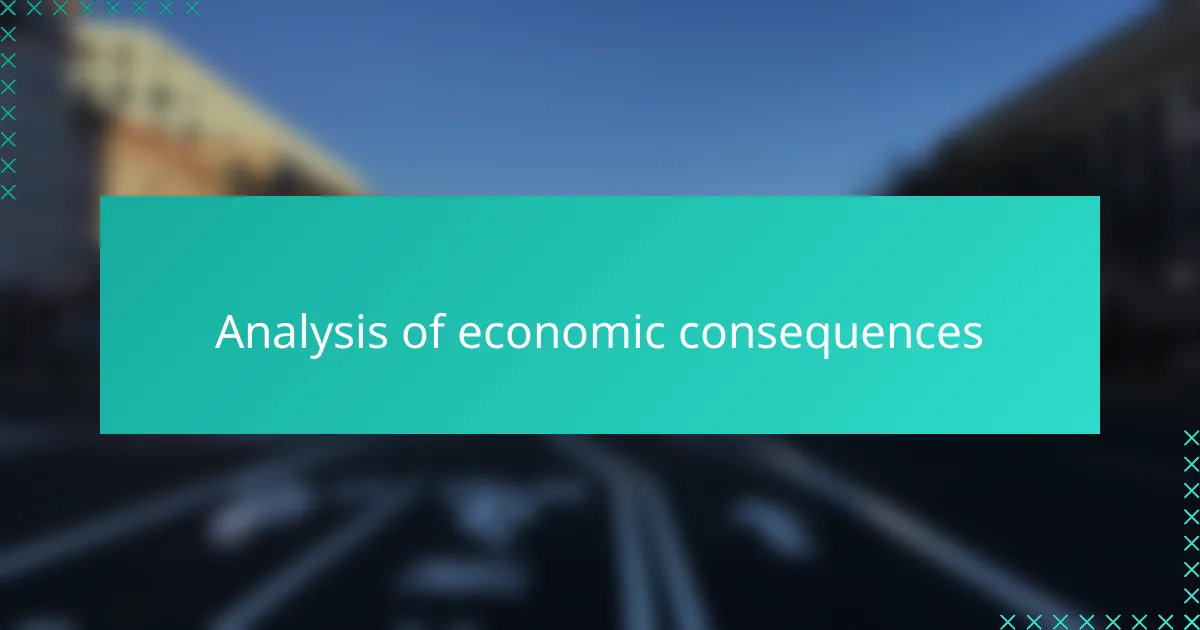
Analysis of economic consequences
The economic consequences of Russia’s reforms are, in my view, a mixed bag. On one hand, efforts to modernize sectors like digital infrastructure hint at future growth, yet persistent bureaucratic hurdles and sanctions weigh heavily on investment confidence. Have you ever wondered why foreign investors remain cautious despite official promises of reform? From what I’ve seen, uncertainty often overshadows potential.
I recall speaking with a Russian economist who described the reforms as “necessary but incomplete,” highlighting the tension between ambition and reality. It struck me how this ambivalence seeps into everyday business decisions, where companies must navigate volatile regulations alongside geopolitical pressures. This dynamic, I think, risks slowing down the very innovation the reforms aim to spark.
Moreover, the reforms’ impact on ordinary citizens’ economic wellbeing isn’t always clear-cut. While some urban centers show signs of progress, many regions still experience stagnation and inequality. It makes me ask: can reform truly be successful if large segments of the population feel left behind? In my experience, sustainable economic transformation demands more than policy shifts—it requires inclusivity and trust.
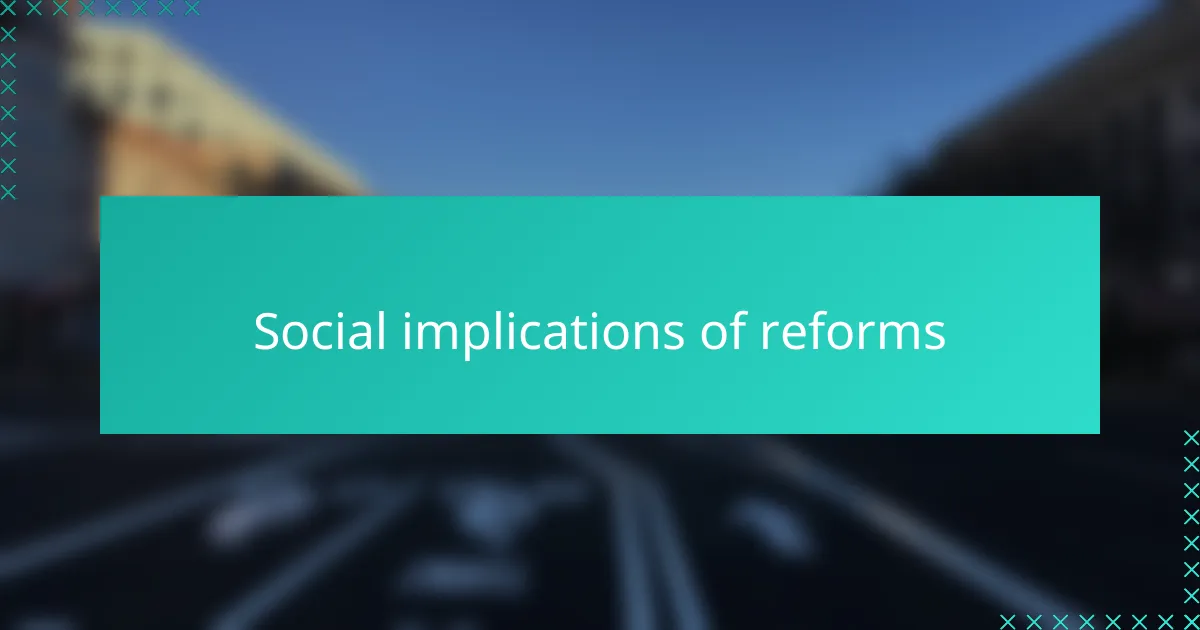
Social implications of reforms
The social implications of Russia’s reforms, from my perspective, reveal a deep tension between hopes for progress and the reality of everyday life. I’ve talked to ordinary Russians who feel that while reforms promise modernization, they often miss addressing the widening social disparities. It’s like watching a story unfold where the benefits seem concentrated in big cities, leaving rural and marginalized communities in a kind of limbo.
What intrigues me most is how these reforms influence the social fabric—trust in institutions, community cohesion, and public morale. In conversations with friends in Russia, I sense a mix of cautious optimism and underlying frustration. It raises a question I often ponder: can policy changes truly reshape social dynamics when many people feel disconnected from those very decisions?
At the same time, I can’t help but notice the role of social control mechanisms embedded within these reforms. From my experience, measures that tighten state oversight often create an atmosphere where social activism and open dialogue struggle to thrive. This, in turn, impacts how society perceives its own agency—do people feel empowered to participate, or resigned to the status quo? My sense is that this balance will be crucial in determining the long-term social legacy of these reforms.
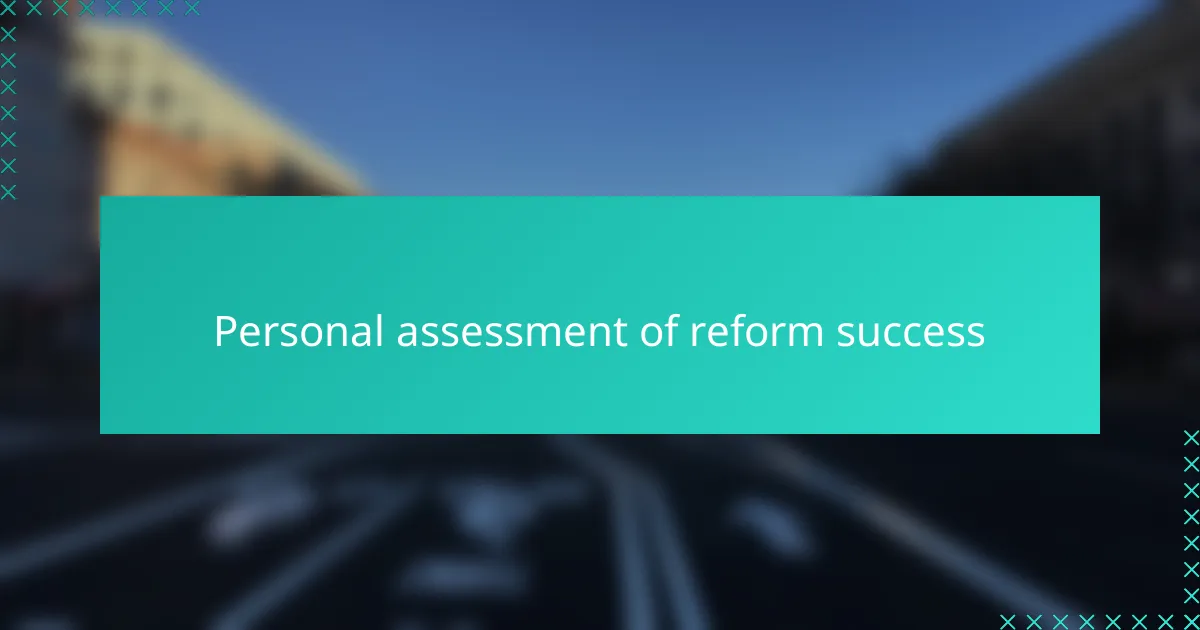
Personal assessment of reform success
When I reflect on the overall success of Russia’s reforms, I’m struck by their uneven results. Some initiatives clearly move the needle—like advances in digital infrastructure—yet others, especially political reforms, seem to stall or even backtrack. It makes me wonder: can true reform flourish without a consistent commitment across all sectors?
In my conversations with experts and locals alike, a recurring theme is cautious optimism blended with skepticism. Many acknowledge progress but hesitate to call it transformative. I remember a colleague saying, “The framework is there, but the follow-through? That’s another story.” This resonates with me, as I see reforms as living processes, not one-time fixes.
Ultimately, assessing success feels like looking at a moving target. How do we weigh short-term disruptions against potential long-term gains? From my vantage point, Russia’s reforms are a patchwork of ambition, real challenges, and competing interests—a complex tapestry that defies simple judgment but invites ongoing attention.

Recommendations for future policies
When I think about Russia’s future policy direction, one recommendation that stands out is the need for greater transparency in decision-making. Have you ever tried to understand a policy completely only to find crucial details shrouded in ambiguity? From my experience, transparency can build trust and reduce skepticism, which seems vital if reforms are to gain genuine public support.
Another aspect I often reflect on is how policies should balance modernization with inclusivity. It puzzles me when reforms accelerate in urban centers but leave vast regions behind. Wouldn’t a more regionally tailored approach help bridge this gap? I recall talking with community leaders who stressed the importance of policies reflecting local realities, not just Moscow-centric agendas.
Finally, fostering open dialogue between the government and civil society feels essential. Can reforms truly succeed without voices from across society being heard? Based on what I’ve seen, encouraging more participatory channels could empower citizens and mitigate feelings of resignation. After all, when people feel part of change, they’re more likely to invest in its success.
